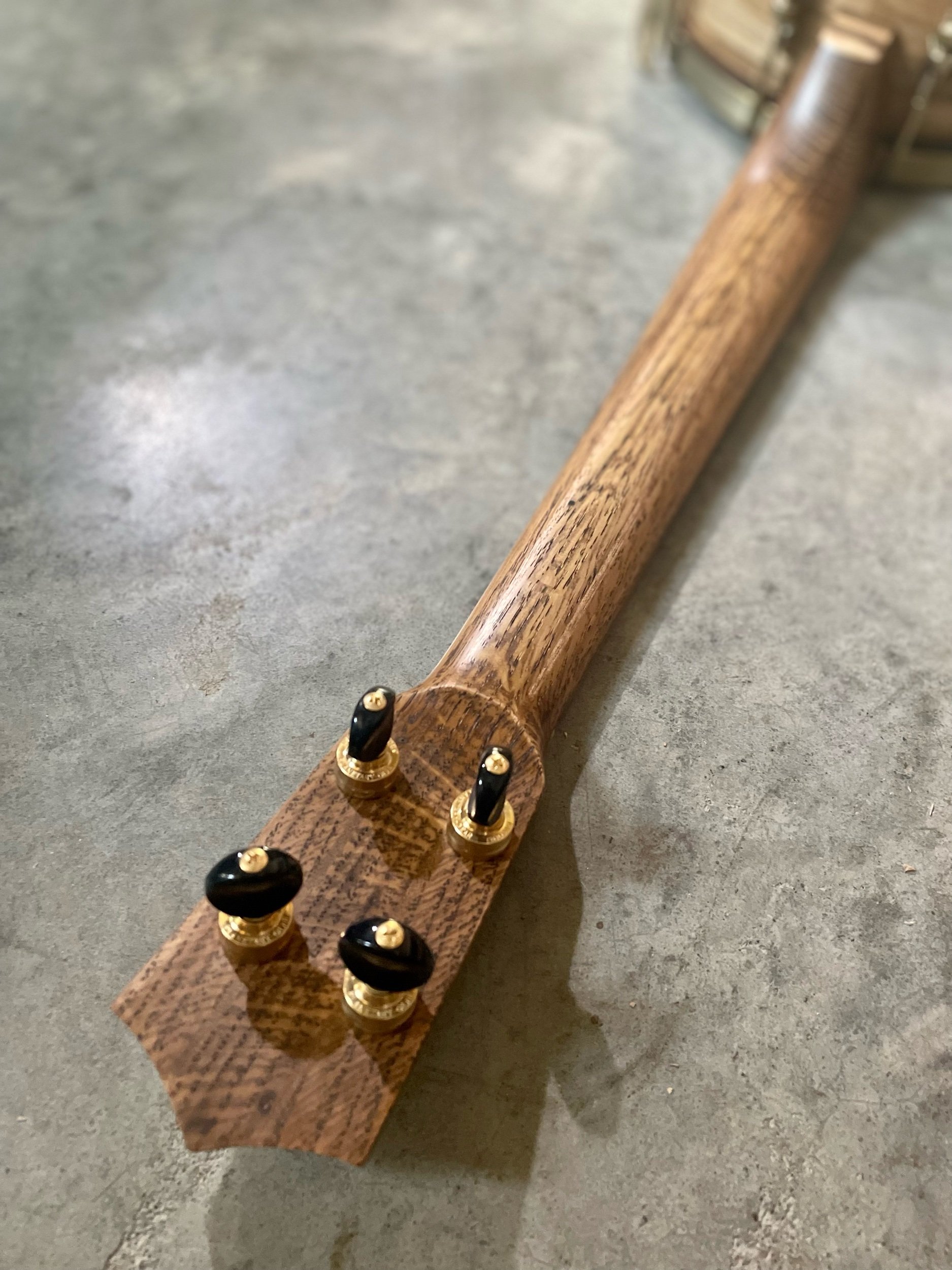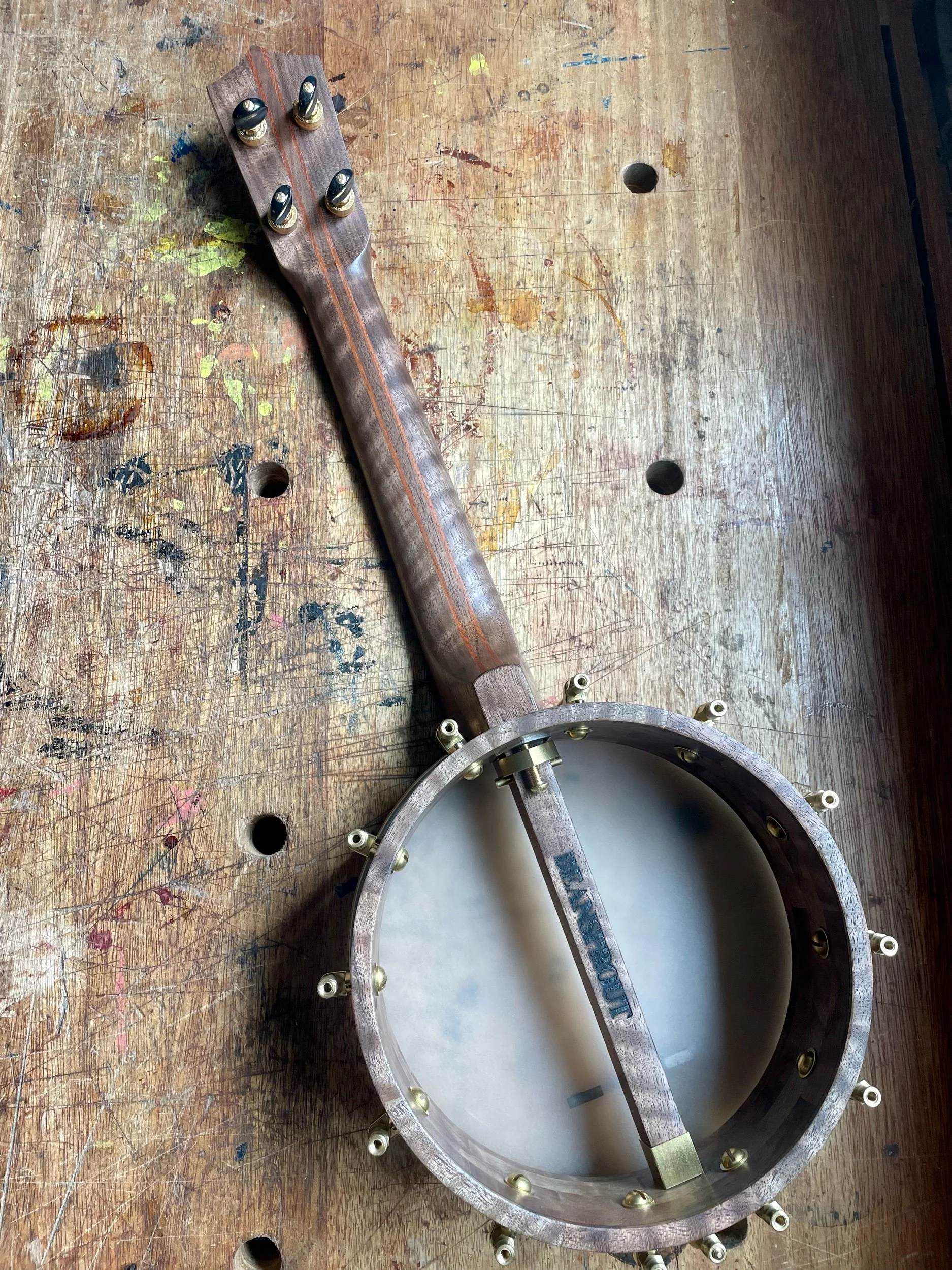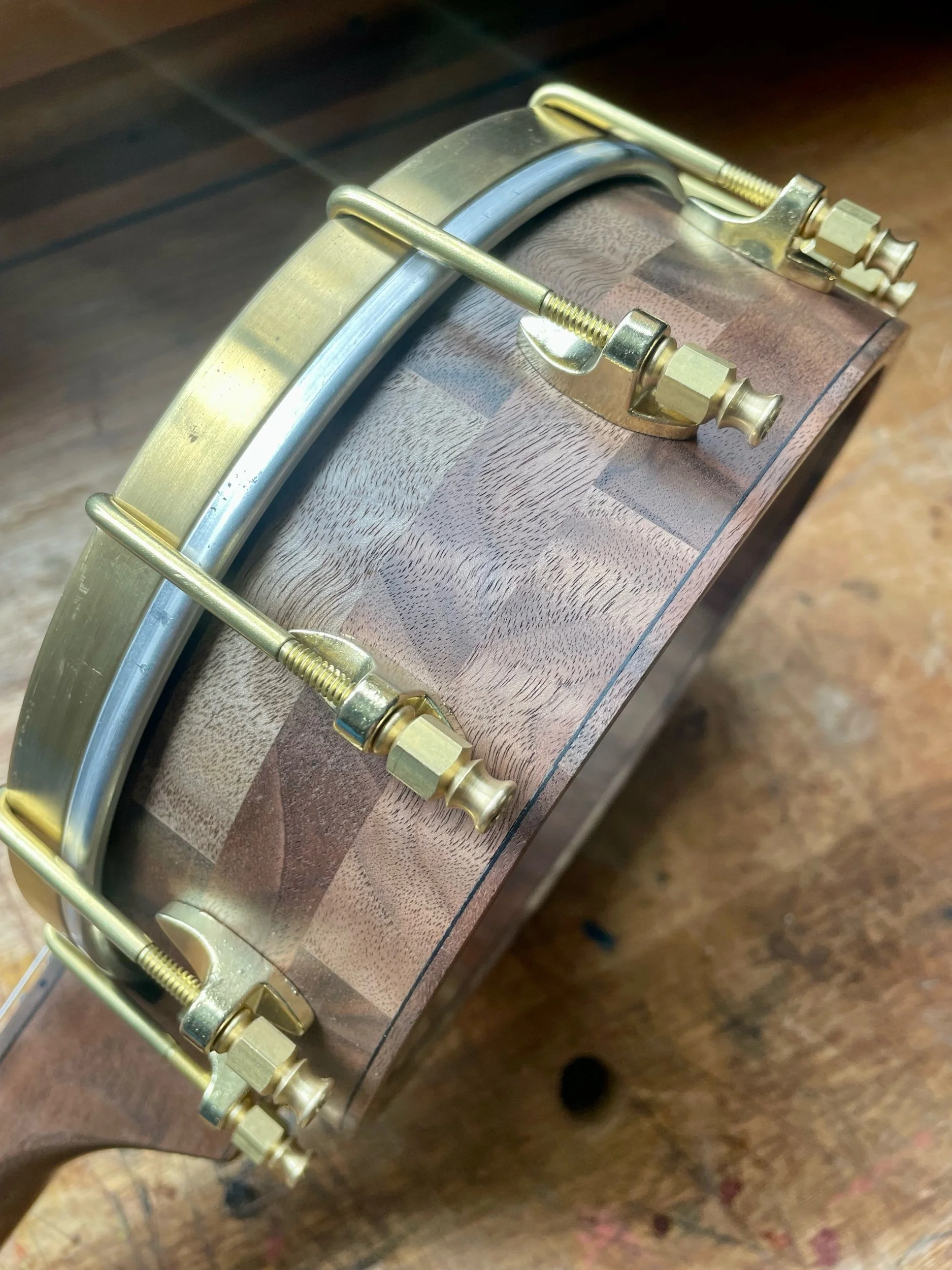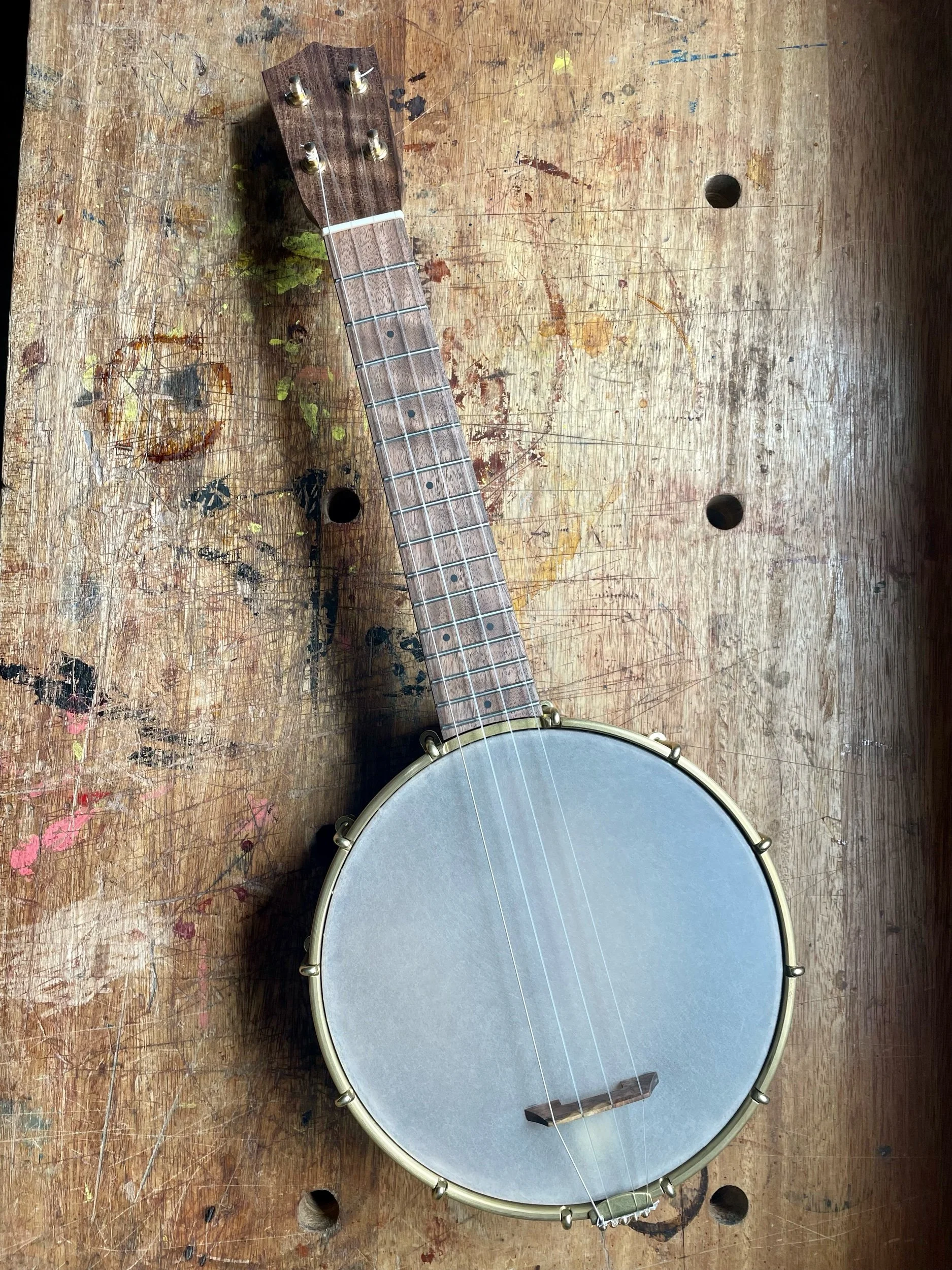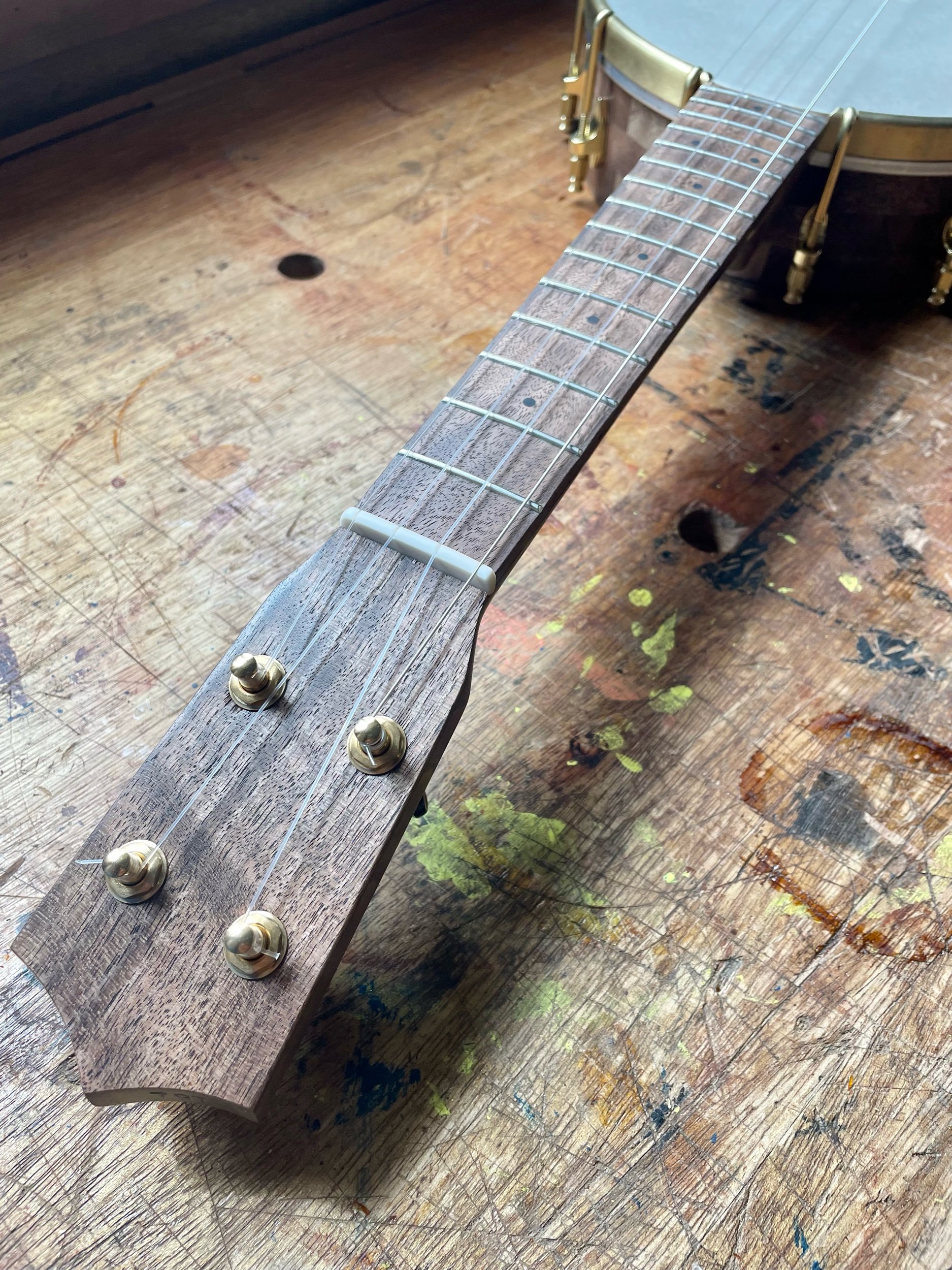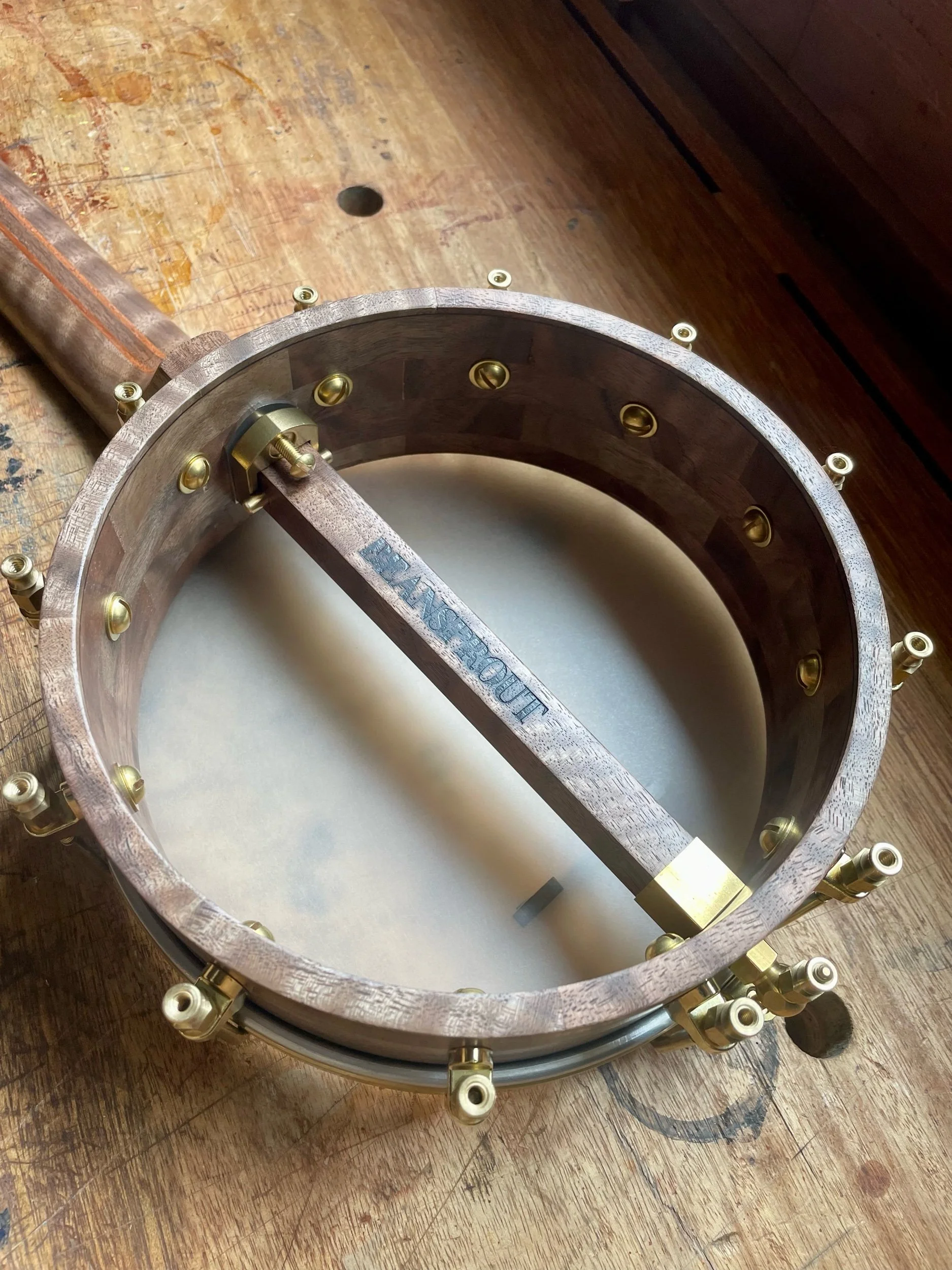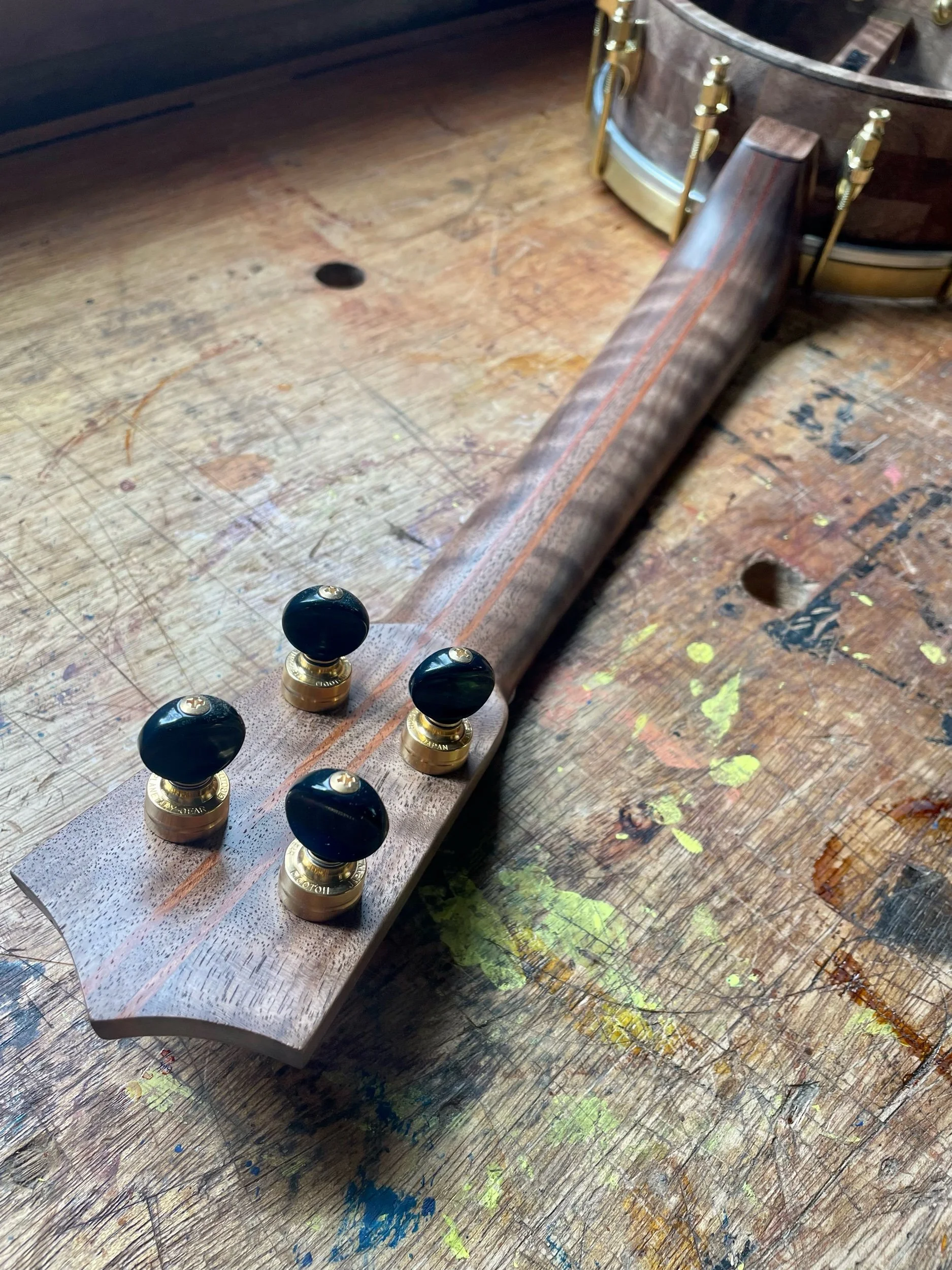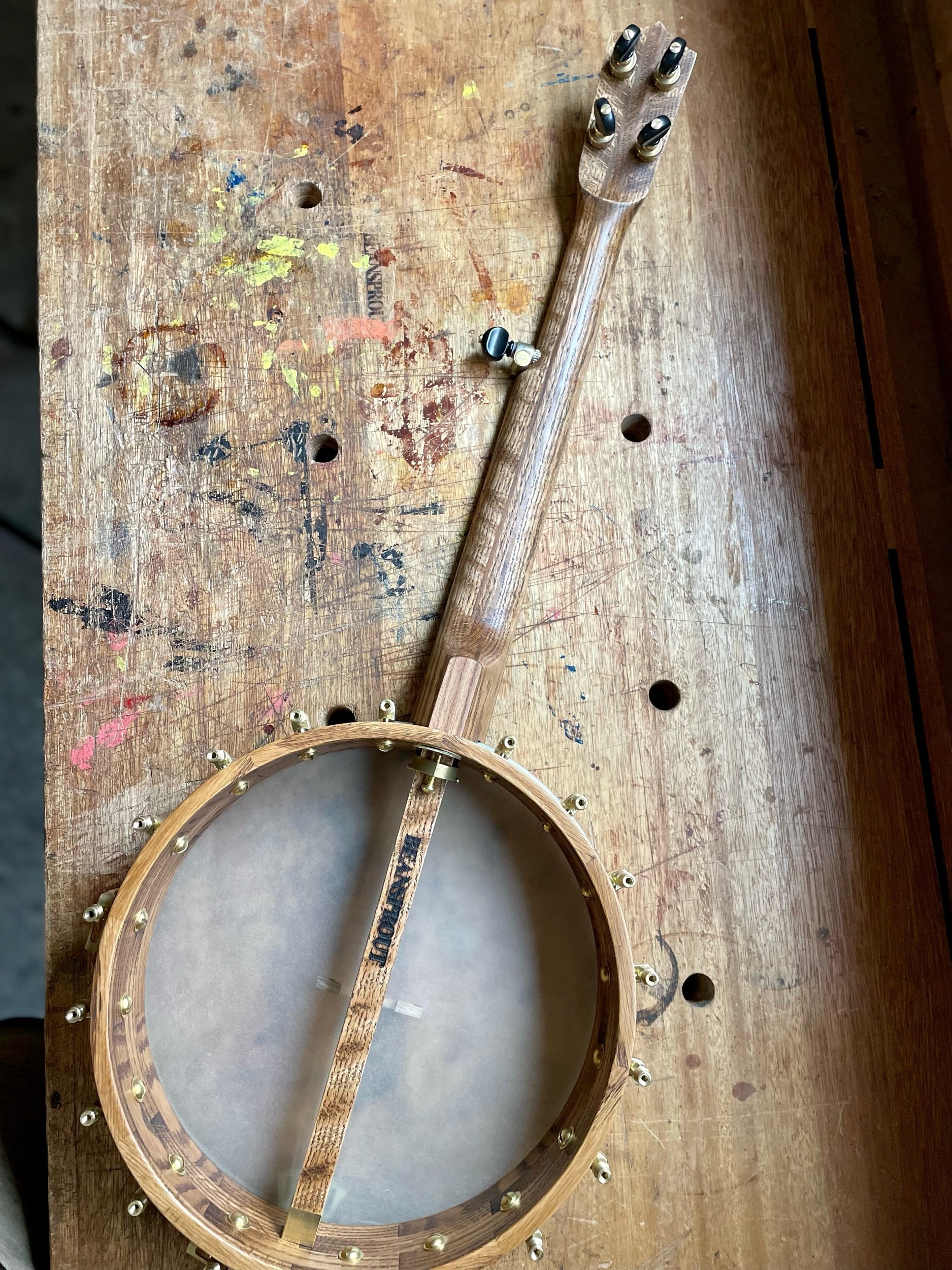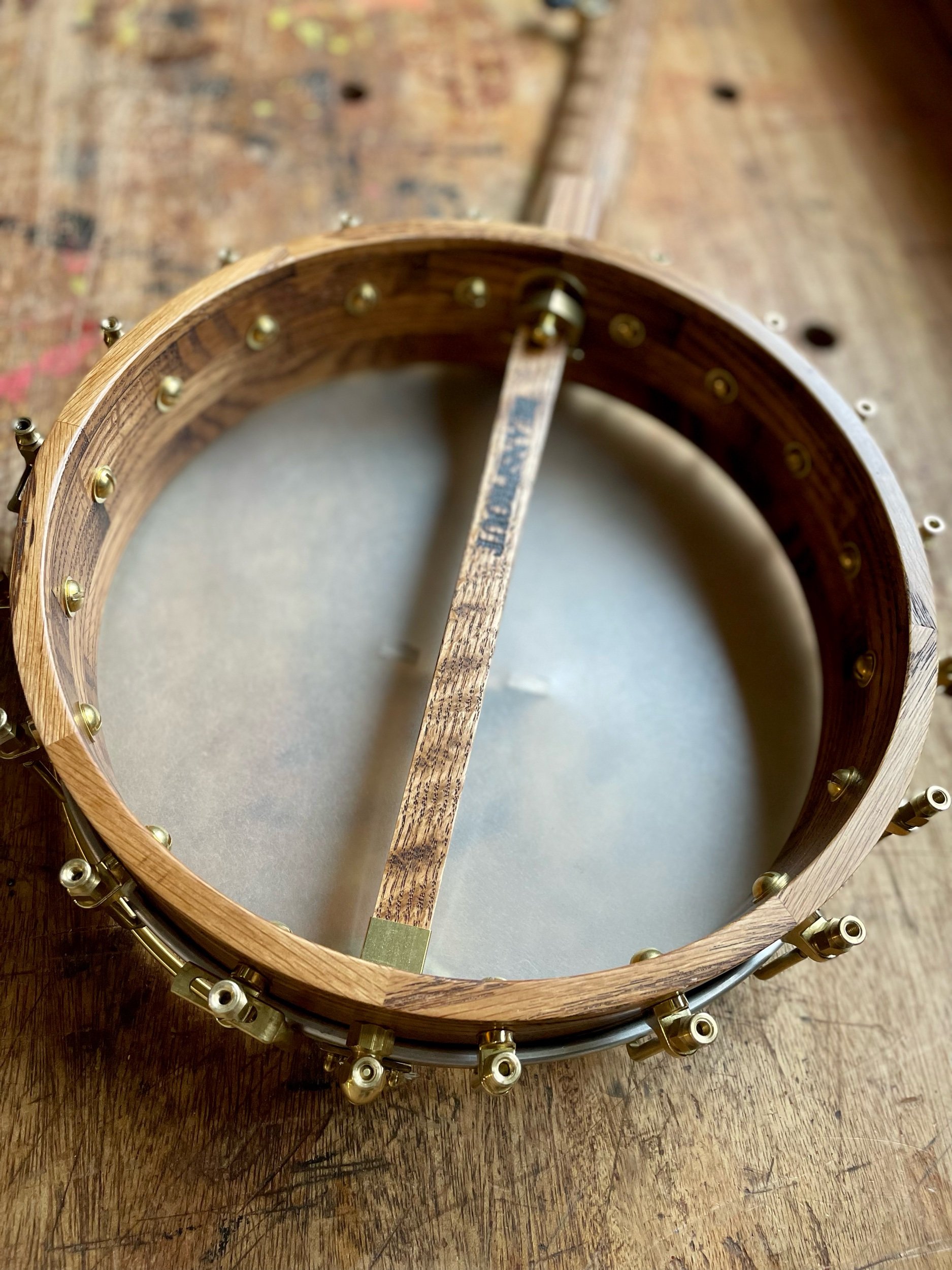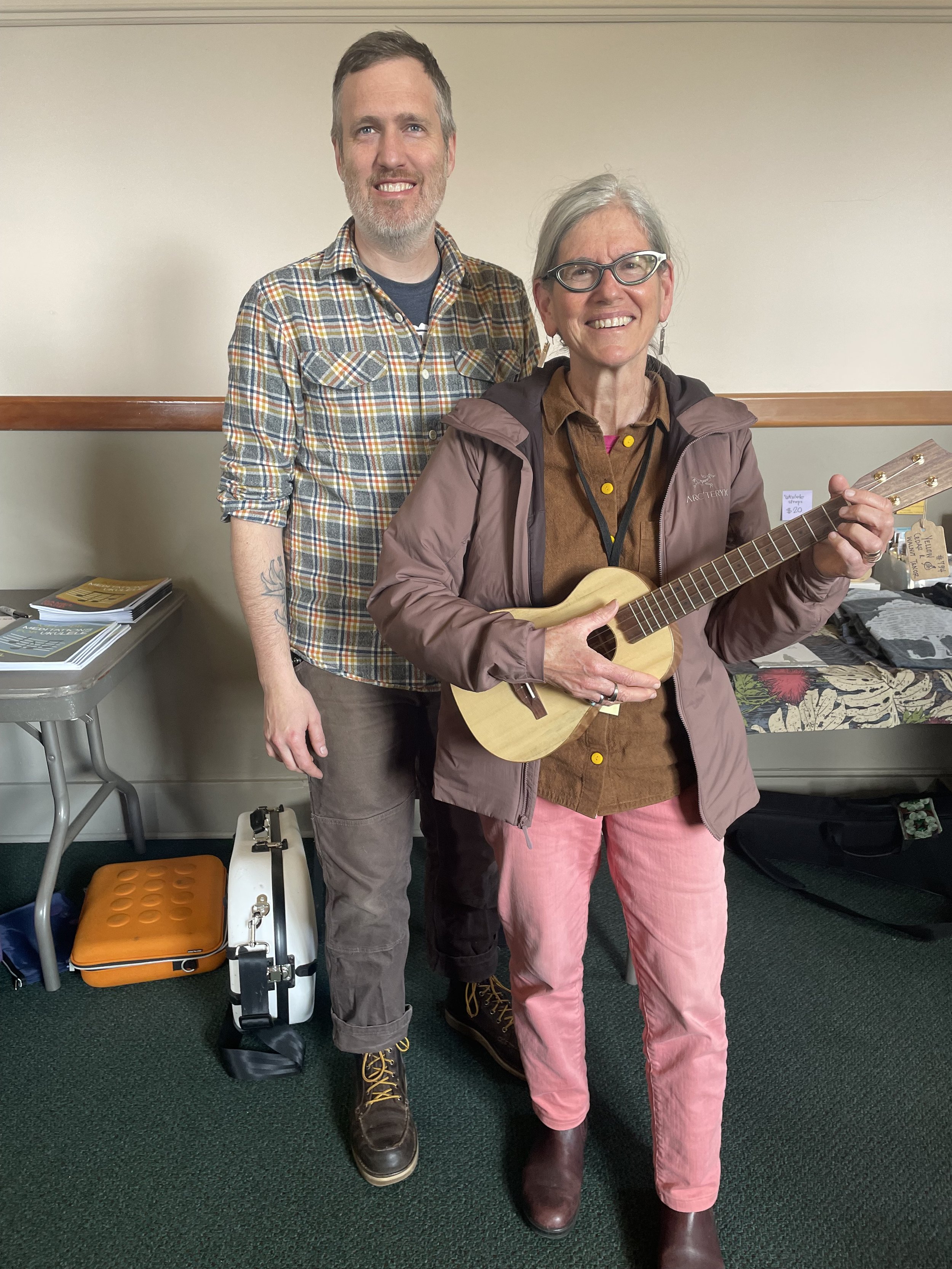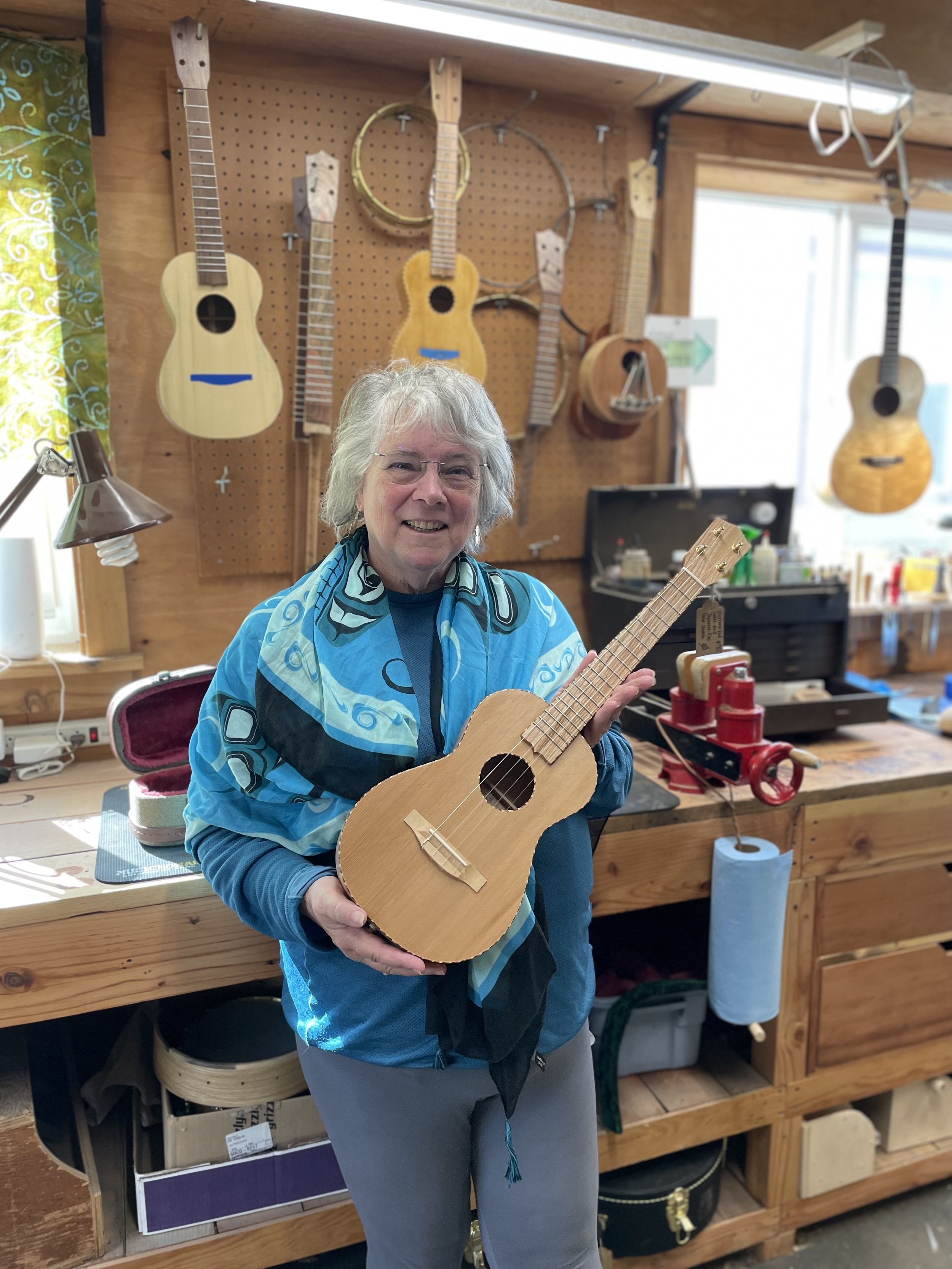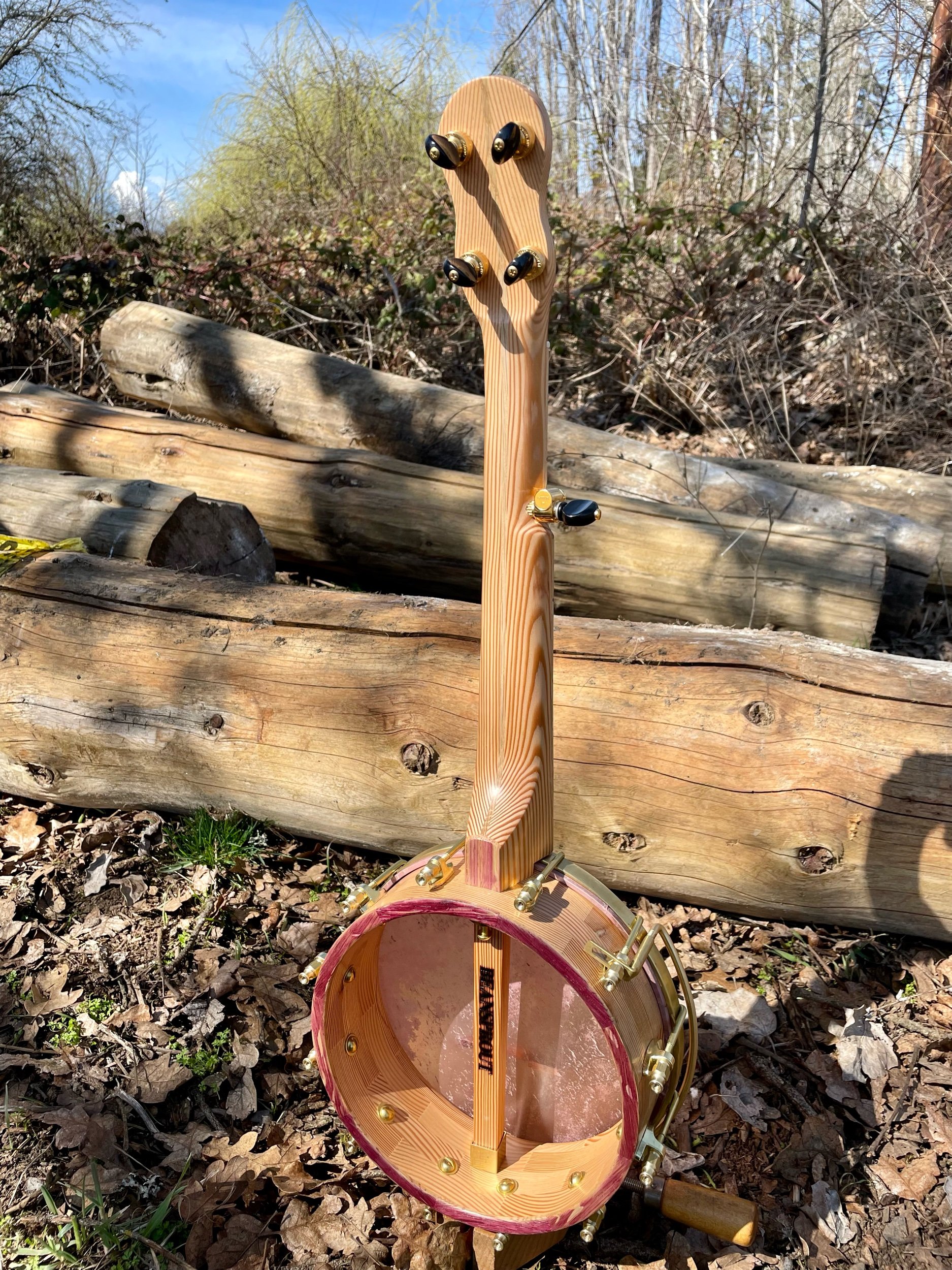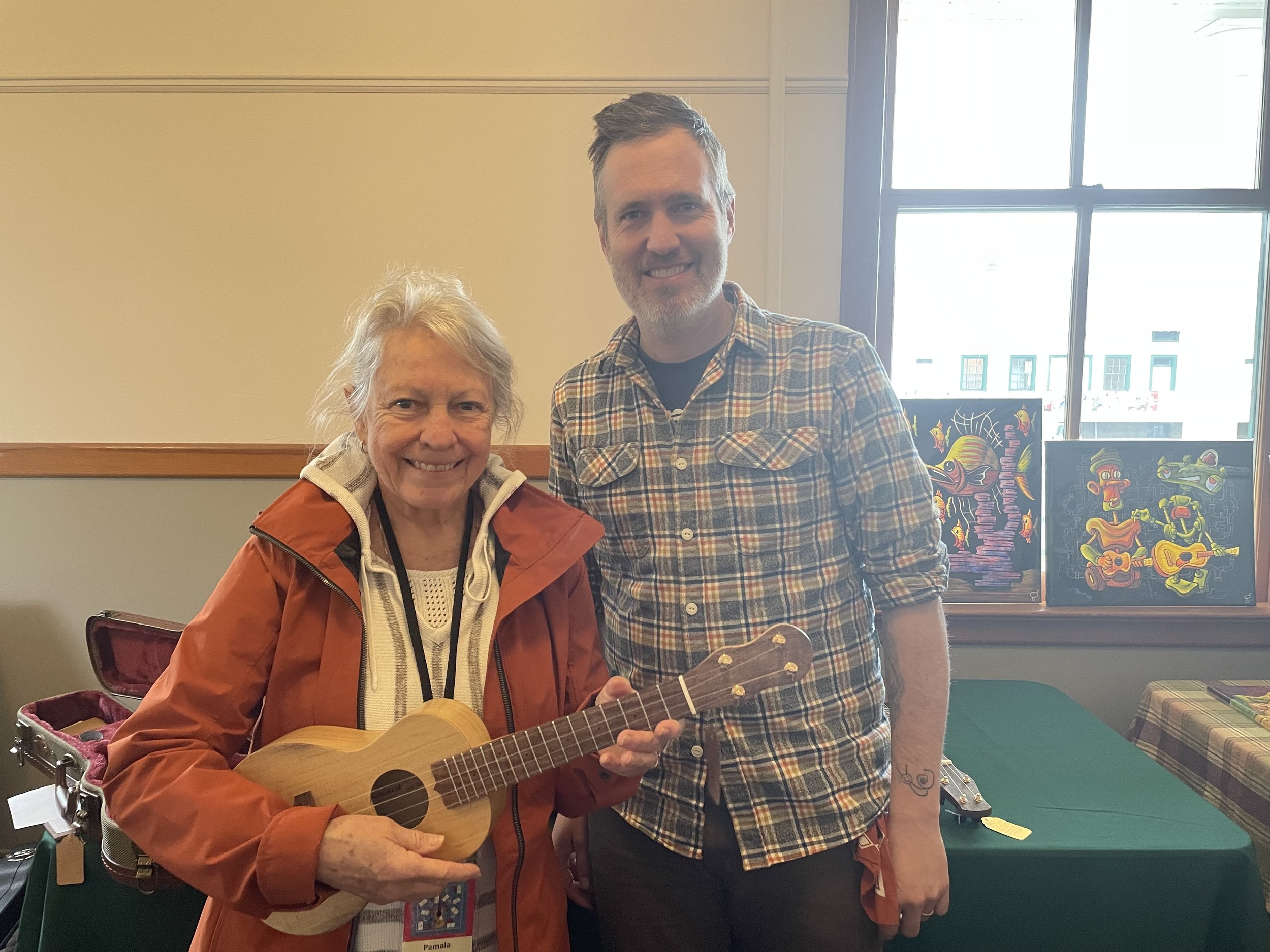This is the second instrument I’ve made as part of my Kingdom Era Ukulele project, where I have been researching the original instruments made in Hawaii in the 1890’s. I used the same hand tools, techniques and most of the same materials as the instruments I examined in the Bishop Museum and in Shawn’s collection from ukulelefriend.com. The body, neck and fretboard are made from Koa from our friend’s sawmill on Oahu. I made the rope binding from Maple, Cherry, Walnut and Mahogany. It is soprano scale, with a flat fretboard and white side dots. In order to be more comfortable for modern players, I’ve used geared Peghed tuners, fluorocarbon strings and small fret wire. The ukulele is finished with shellac and wax. It comes with a handmade case made in the old style from Mahogany scraps with rope binding and Kapa style cloth.
The sale of this instrument will fund a future research trip to Hawaii, and a portion of the proceeds will go to the non profit Saving Hawaii’s Forests. The sale will be done by auction and you can place your bid here. Thank you!






































